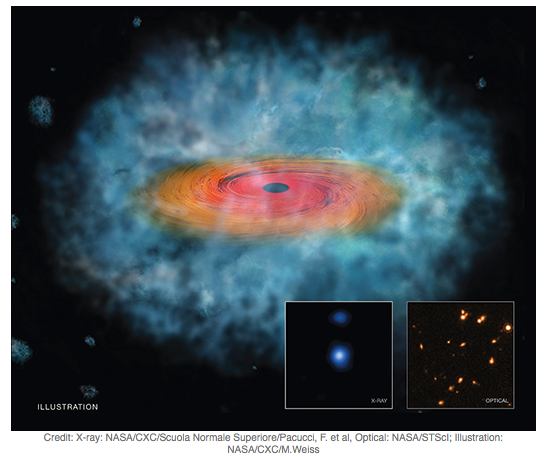
Astronomers used data from NASA’s Chandra X-ray Observatory, Hubble Space Telescope and Spitzer Space Telescope to find cosmic seed in the early universe that should grow into supermassive black holes.
Supermassive black holes have masses up to billions of times the mass of the sun. One theory suggests that they build their mass by pulling gas from their host galaxy and by mergers of smaller black holes. Supermassive black holes, though, have been observed to form less than a billion years after the Big Bang. The aforementioned process should take much longer than found by these observations.
A group of scientists used computer models of black hole seeds combined with a new method to select candidates for these objects, using images from NASA’s Great Observatories. Their work suggests that the first black holes formed directly from collapsing clouds of gas, bypassing intermediate phases, like the formation and death of massive stars. Their analysis revealed two candidates for black holes seeds.
Now, the team plans further observations in the infrared and in X-rays to obtain data for more of the properties of the two candidates. NASA’s James Webb Space Telescope and the European Extremely Large Telescope will also allow the study of more distant and smaller black holes. Until these new telescopes start to operate, astronomers have to develop the theoretical framework needed to interpret the new data.
Publication: Pacucci et al. 2016
Sources: Chandra
